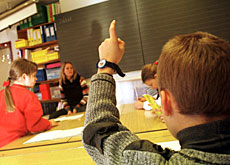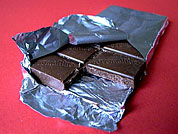Did you know?

In brief
Switzerland is a mountainous republic in the centre of Europe. It is bordered by Italy, France, Germany, Austria and Liechtenstein.
The low birth rate and slowed immigration mean the average age of the population is, as in other industrialised countries, on the increase.
Switzerland has four national languages: German spoken by 64 per cent, French by 20 per cent, and Italian by 7 per cent. The fourth language, Romansch, is rooted in the eastern canton of Graubünden, and is spoken by some 50,000 people.
Switzerland is traditionally a Christian country, and the Federal Constitution is still preambled in the name of God.
Switzerland’s surface extends 350 kilometres from East to West, and 220km North to South.
Switzerland has three main topographical zones: the mountainous alpine region (60 per cent), the midland plain (30 per cent), and the Jura hills (10 per cent).
Growing old
Life expectancy has almost doubled for the Swiss since 1900. A man born today can expect to live 77.9 years, while a woman’s life expectancy is now 83 years.
Switzerland has the highest percentage (0.01%) of people over the age of 100 in Europe. Only the Japanese do better. There were 798 Swiss centenarians in 2000, 677 of whom were women, for a population of 7.2 million.
Railways
On twin-track lines, Swiss Federal Railway trains drive on the left. This is a hangover from the 19th century when the network was planned. George Stephenson, a relative of the “Rocket” pioneer, laid out many lines, and being an Englishman, he obviously stuck to the left.
Tobacco
Tobacco is grown in Switzerland. The midland plain has a suitable climate, and cantons Fribourg and Vaud in the west are one of the main growing areas. Tobacco from the Murten region was once disrespectfully known as “Murten cabbage”.
Since 1975 the annual crop has varied between 1,100 and 1,600 tons annually. It is largely used for cheroots and the like.
Cows and kids
The Swiss spend as much annually on subsidising three cows as they do on primary schooling for one child.
That, at least, is the conclusion of one of the country’s leading economics professors.
Silvio Borner, head of Basel University’s department of applied economics, calculated that a single Swiss cow costs SFr4,000 in government subsidies, while the bill for keeping a child in primary school for one year is SFr12,000.
Saffron
Small quantities of saffron are grown in the upper-Rhone region of Canton Valais. The bright yellow and extremely expensive powder that comes from the saffron plant, or crocus sativus, is used to colour and flavour rice and pasta dishes, and also alcoholic beverages. The village of Mund has an AOC, or certificate of origin, for saffron grown there.
Twisted borders
Switzerland’s complicated frontier has led to a few quirks. The village of Büsingen, near the northern town of Schaffhausen, is part of Germany. Road signs, telephone boxes, etc., all bear German markings and colours, but Büsingen is totally surrounded by Swiss territory, and to get there from the rest of Germany, you have to cross into Switzerland.
A similar enclave is formed by Campione, near Lugano, which belongs to Italy, but is surrounded by Swiss territory.
A reverse case is the eastern Swiss village of Samnaun, which is outside the Swiss customs zone. To reach it, you have to leave Switzerland. This is a remnant from the times when the only access road to Samnaun came from the Austrian side of the Inn valley.

In compliance with the JTI standards
More: SWI swissinfo.ch certified by the Journalism Trust Initiative

You can find an overview of ongoing debates with our journalists here . Please join us!
If you want to start a conversation about a topic raised in this article or want to report factual errors, email us at english@swissinfo.ch.